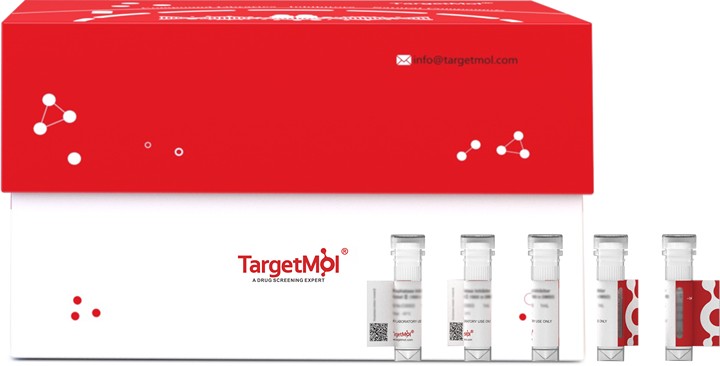Shopping Cart
Remove All Your shopping cart is currently empty
Your shopping cart is currently empty
KLHDC3 Protein, Human, Recombinant (His & Myc) is expressed in Baculovirus insect cells with N-10xHis and C-Myc tag. The predicted molecular weight is 47 kDa and the accession number is Q9BQ90.

| Pack Size | Price | USA Warehouse | Global Warehouse | Quantity |
|---|---|---|---|---|
| 5 μg | $176 | 20 days | 20 days | |
| 10 μg | $293 | 20 days | 20 days | |
| 20 μg | $491 | 20 days | 20 days | |
| 50 μg | $926 | 20 days | 20 days | |
| 100 μg | $1,500 | 20 days | 20 days | |
| 200 μg | $1,750 | 20 days | 20 days | |
| 500 μg | $2,150 | 20 days | 20 days |
| Biological Activity | Activity has not been tested. It is theoretically active, but we cannot guarantee it. If you require protein activity, we recommend choosing the eukaryotic expression version first. |
| Description | KLHDC3 Protein, Human, Recombinant (His & Myc) is expressed in Baculovirus insect cells with N-10xHis and C-Myc tag. The predicted molecular weight is 47 kDa and the accession number is Q9BQ90. |
| Species | Human |
| Expression System | Baculovirus Insect Cells |
| Tag | N-10xHis, C-Myc |
| Accession Number | Q9BQ90 |
| Synonyms | Testis intracellular mediator protein,PEAS,KLHDC3,Kelch domain-containing protein 3 |
| Amino Acid | MLRWTVHLEGGPRRVNHAAVAVGHRVYSFGGYCSGEDYETLRQIDVHIFNAVSLRWTKLPPVKSAIRGQAPVVPYMRYGHSTVLIDDTVLLWGGRNDTEGACNVLYAFDVNTHKWFTPRVSGTVPGARDGHSACVLGKIMYIFGGYEQQADCFSNDIHKLDTSTMTWTLICTKGSPARWRDFHSATMLGSHMYVFGGRADRFGPFHSNNEIYCNRIRVFDTRTEAWLDCPPTPVLPEGRRSHSAFGYNGELYIFGGYNARLNRHFHDLWKFNPVSFTWKKIEPKGKGPCPRRRQCCCIVGDKIVLFGGTSPSPEEGLGDEFDLIDHSDLHILDFSPSLKTLCKLAVIQYNLDQSCLPHDIRWELNAMTTNSNISRPIVSSHG |
| Construction | 1-382 aa |
| Protein Purity | > 85% as determined by SDS-PAGE. |
| Molecular Weight | 47 kDa (predicted) |
| Endotoxin | < 1.0 EU/μg of the protein as determined by the LAL method. |
| Formulation | Tris-based buffer, 50% glycerol |
| Reconstitution | A Certificate of Analysis (CoA) containing reconstitution instructions is included with the products. Please refer to the CoA for detailed information. |
| Stability & Storage | Lyophilized powders can be stably stored for over 12 months, while liquid products can be stored for 6-12 months at -80°C. For reconstituted protein solutions, the solution can be stored at -20°C to -80°C for at least 3 months. Please avoid multiple freeze-thaw cycles and store products in aliquots. |
| Shipping | In general, Lyophilized powders are shipping with blue ice. Solutions are shipping with dry ice. |
| Research Background | Substrate-recognition component of a Cul2-RING (CRL2) E3 ubiquitin-protein ligase complex of the DesCEND (destruction via C-end degrons) pathway, which recognizes a C-degron located at the extreme C terminus of target proteins, leading to their ubiquitination and degradation. The C-degron recognized by the DesCEND pathway is usually a motif of less than ten residues and can be present in full-length proteins, truncated proteins or proteolytically cleaved forms. The CRL2(KLHDC3) complex specifically recognizes proteins with a glycine (Gly) at the C-terminus, leading to their ubiquitination and degradation: recognizes the C-terminal -Arg-(Xaa)n-Arg-Gly, -Arg-(Xaa)n-Lys-Gly, and -Arg-(Xaa)n-Gln-Gly degrons. The CRL2(KLHDC3) complex mediates ubiquitination and degradation of truncated SELENOV and SEPHS2 selenoproteins produced by failed UGA/Sec decoding, which end with a glycine. May be involved in meiotic recombination process. |
| Size | Quantity | Unit Price | Amount | Operation |
|---|

Copyright © 2015-2026 TargetMol Chemicals Inc. All Rights Reserved.